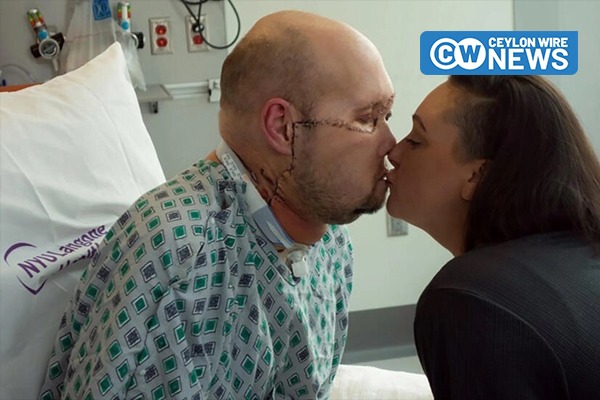A team of surgeons in New York has performed the world’s first transplant of an entire eye in a procedure widely hailed as a medical breakthrough, although it isn’t yet known whether the man will ever see through the donated eye.
The groundbreaking surgery involved removing part of the face and the whole left eye — including its blood supply and optic nerve — of a donor and grafting them onto a lineworker from Arkansas who survived a 7,200-volt electric shock in June 2021.
Aaron James, 46, suffered extensive injuries including the loss of his left eye, his dominant left arm above the elbow, his nose and lips, front teeth, left cheek area and chin.
He was referred to NYU Langone Health, a leading medical center for facial transplants, which carried out the procedure on May 27.
Transplanting an entire eye has long been a holy grail of medical science, and though researchers have had some success in animals — where they have restored partial vision — it’s never before been performed in a living person.
“It’s uncharted territory, but we’re looking forward to the exploration,” Eduardo Rodriguez, who led the surgery, told AFP in an interview.
It was Rodriguez’ fifth face transplant, and “we’ve been able to trim the time from where I started in 2012 from 36 hours to now 21,” he said, adding face transplants are no longer an experimental procedure and should be considered “standard of care” in certain cases of severe disfigurement.
The transplanted left eye appears very healthy, said retinal ophthalmologist Vaidehi Dedania. It has a good blood supply, is maintaining its pressure, and is generating an electrical signal, though James is not yet able to see. “But we have a lot of hope,” she added.
‘Huge deal’
“This is a huge deal,” Kia Washington, a professor of surgery at University of Colorado Anschutz Medical Campus, who has been working in the same field for 15 years, told AFP, commending her peers.

Daniel Pelaez of the University of Miami’s Bascom Palmer Eye Institute, who has also been working towards the same goal, told AFP: “The transplantation of a human eye at NYU Langone represents a pivotal moment in our common quest to restore sight and offers hope to countless individuals around the world.”
James, whose right eye remains intact, was considered an ideal candidate because his need for a facial transplant meant he would require immunosuppressive drugs regardless. This meant attempting an eye transplant would be worthwhile even if it conferred only cosmetic value.
“I can smell again, I can eat again, taste food. For the first time in a year and a half, I got to kiss my wife,” he told AFP in an interview. “I want to go out in public now and not wear a mask and cover up.”
“I want it to get out to as many people as we can who may not know about this option — especially about the eye,” he continued. “Even if it didn’t work for me, it was a start, so maybe Dr Rodriguez could learn something different to do the next time.”
Optic nerve regeneration
Given the time that has passed since the surgery, Washington said she did not think it likely that James’s eye would regain vision, but “I never say something is impossible,” she added.
The NYU Langone team said they had used bone marrow-derived adult stem cells to promote nerve repair.
Achieving the goal of sight restoration could involve bringing other cutting-edge approaches to bear, said Washington — including gene therapy to tap the optic nerve’s intrinsic ability to heal; using a device called a nerve wrap to protect the tissue; or using devices that pick up signals and bypass the damaged pathway.
“We’re making great progress in the treatments to promote optic nerve regeneration that could accompany eye transplant,” Jeffrey Goldberg, who is leading similar efforts at the Byers Eye Institute at Stanford University, told AFP.
“These adjunctive therapies will allow the donor eye to significantly connect to the brain and restore meaningful visual function to blind patients everywhere.”









